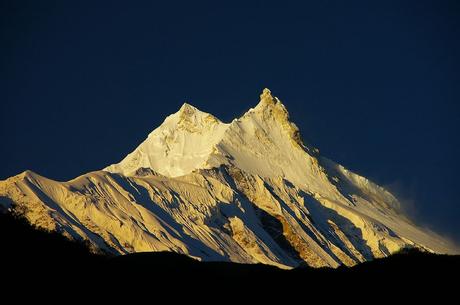 Remember the story I posted earlier this fall about the controversy that was brewing on Manslu over whether or not climbers actually topped out on that mountain? If not, here's the cliff notes version.
Remember the story I posted earlier this fall about the controversy that was brewing on Manslu over whether or not climbers actually topped out on that mountain? If not, here's the cliff notes version.Back in October, about 150 climbers claimed to have reached the top of the 8163 meter (26,781 ft) mountain, when in reality most of them turned back below the true summit. That's because the approach to the top is narrow and steep, with a dangerous snow cornice making it a tricky climb to actually complete, as you'll see in this video. This caused a bit of a stir in the mountaineering community, with debate going back and fourth as to whether or not the climbers had truly summited Manslu. There was even some finger pointing about whose responsibility it was to fix ropes and so on. That debate extended further into discussion of whether or not the alpinists who didn't stand on the true summit should actually receive summit certificates.
Well, that debate might continue in mountaineering circles, but it for its part, government officials in Nepal have weighed in on the topic. According to The Himalayan Times, the Department of Tourism will indeed provide summit certificates for everyone who went up the mountain back in October, even if they fell a bit short of the actual top of the peak. The DoT had halted the process of handing out the certificates while it investigated the matter, but now it has determined that it will proceed with distributing them once again.
Personally, I'm of the mind that if you didn't stand on the true summit, you shouldn't get a certificate, and I'd be willing to bet that Miss Elizabeth Hawley – the ultimate authority on Himalayan climbing – would agree with me. I respect the decision of the climbers who elected to turn back out of safety concerns, but they didn't reach the summit, which has been the measuring stick for mountaineering for hundreds of years. It is as simple as that.
Of course, the Nepali government likes to avoid controversy where it can, and it likes to keep the money flowing in for the permits it issues as well. With that in mind, it makes sense that they would issue summit certificates, even though not everyone reached the top. I would expect this practice will continue in the future too.

